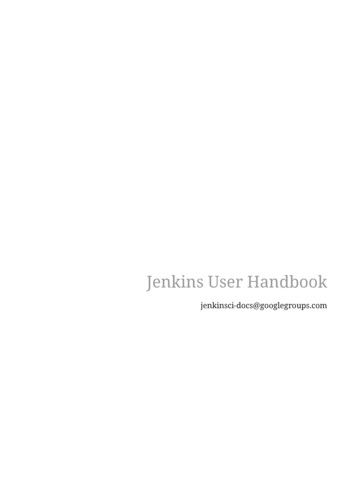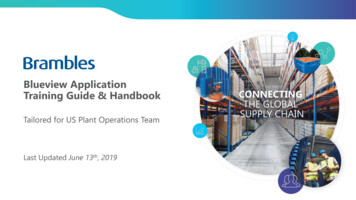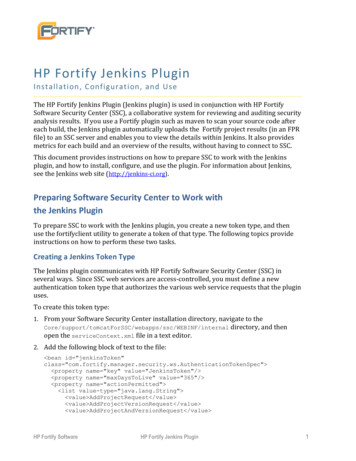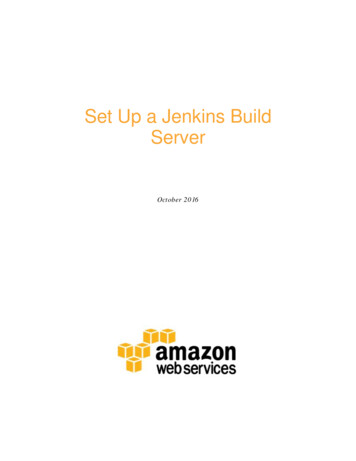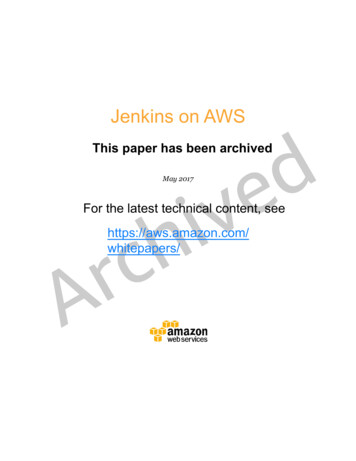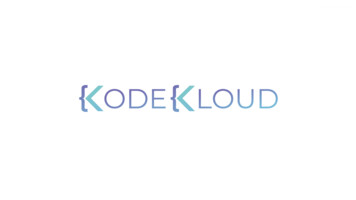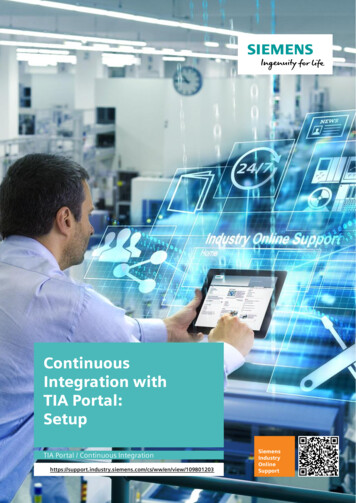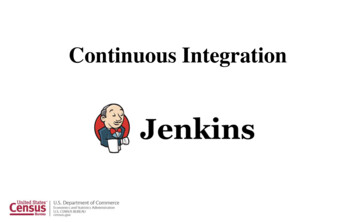
Transcription
Continuous Integration
Continuous Integration What is Continuous Integration?Why do we need it?Different phases of adopting Continuous Integration
What is Continuous Integration? Developers commit code to a sharedrepository on a regular basis. Version control system is being monitored.When a commit is detected, a build will betriggered automatically. If the build is not green, developers will benotified immediately.
Why do we need Continuous Integration? Detect problems or bugs, as early as possible, in thedevelopment life cycle. Since the entire code base is integrated, built and testedconstantly , the potential bugs and errors are caught earlier inthe life cycle which results in better quality software.
Different stages of adoptingContinuous Integration
Stage 1: No build servers. Developers commiton a regular basis. Changes are integrated andtested manually. Fewer releases.Few commits
Stage 2:Build nightlyBuild and run tests Automated builds arescheduled on a regular basis. Build script compiles theapplication and runs a set ofautomated tests. Developers now commit theirchanges regularly. Build servers would alert theteam members in case ofbuild failure.
Stage 3:TriggeredatomicallyBuild and run tests A build is triggered whenevernew code is committed tothe central repository. Broken builds are usuallytreated as a high priorityissue and are fixed quickly.
Stage 4:Triggeredatomically Automated code qualityand code coverage metricsare now run along withunit tests to continuouslyevaluate the code quality.Is the code coverage increasing?Build, run code quality and codecoverage metrics along with testsDo we have fewer and fewerbuild failures?
Stage 5:Triggeredatomically Automated DeploymentProduction
CI/CD Environment
Continuous IntegrationContinuous DeliveryContinuous Deployment
Continuous IntegrationThe practice of merging development work with the main branchconstantly. Continuous DeliveryContinual delivery of code to an environment once the code is ready toship. This could be staging or production. The idea is the product isdelivered to a user base, which can be QAs or customers for review andinspection. Continuous DeploymentThe deployment or release of code to production as soon as it is ready.
DevOpsDeployment
How to implement Continuous Integration?Non-hosted solutionsHosted solutions
Continuous Integration is also a mindset Fixing broken builds should be treated as a high priority issue for all teammembers. The deployment process should be automated, with no manual steps involved. All team members should focus on contributing to high-quality tests because theconfidentiality of the CI process highly depends on the quality of the tests.
What is Jenkins Jenkins is a continuous integration and build server. It is used to manually, periodically, or automatically build softwaredevelopment projects. It is an open source Continuous Integration tool written in Java. Jenkins is used by teams of all different sizes, for projects with variouslanguages.
Why Jenkins is popular Easy to use Great extensibility– Support different version control systems– Code quality metrics– Build notifiers– UI customization
Jenkins’ Master and Slave Architecture Some Important Jenkins’ Terminologies
Jenkins’ Master and Slave ArchitectureMaster: Schedule build jobs. Dispatch builds to the slaves for theactual job execution. Monitor the slaves and record thebuild results. Can also execute build jobs directly.Slave: Execute build jobs dispatched bythe master.
Jenkins UI Overview
Install GIT and GitHub plugin
Install and Configure Maven
What does Maven do? Maven describes how the software is built. Maven describes the project’s dependencies.
Java Build Tools
Configure Jenkins for a Maven -based project
Create a Maven -based Jenkins project
Run Maven-based Jenkins project
Maven pom.xml file Describe the software project being built, including––––The dependencies on other external modules.The directory structures.The required plugins.The predefined targets for performing certain tasks such ascompilation and packaging.
Different Phases in Maven Build ployValidate the project is correct and all necessary information is available.Compile the source code of the project.Test the compiled source code using a suitable unit testing framework.Take the compiled code and package it in its distributable format.Run any checks on results of integration tests to ensure quality criteria are met.Install the package into the local repository, for use as a dependency in otherprojects locally.Copy the final package to the remote repository for sharing with otherdevelopers and projects.
Maven Build Phases These lifecycle phases are executed sequentially to complete the defaultlifecycle. We want to specify the maven package command, this command wouldexecute each default life cycle phase in order including validate, compile,test before executing package. We only need to call the last build phase to be executed.
Jenkins code quality metrics report
Checkstyle is a code static analysis tool to help programmers to writeJava code that adheres to a coding standard such as Avoiding multiple blank lines;Removing unused variables;Enforcing correct indentations;
Jenkins’ support for other build systems(Ant, Gradle and shell scripts)
Apache Ant Widely-used and very well-known build scripting language for Java.Flexible, extensible, relatively low-level scripting language.An Ant build script is made up of a number of targets, each targetperforms a particular job in the build process.
Gradle Gradle is a relatively new open source build tool for the Java Virtual Machine.Build scripts for Gradle are written in a Domain Specific Language based onGroovy.The concise nature of Groovy scripting lets you write very expressive build scriptswith very little code.
Build ScriptsMaven Build Script\
Gradle Build ScriptAnt Build Script Sample
Install and configure Tomcat as a stagingenvironment
TomcatTomcat is an open-source web server and provides a "pure Java” HTTPweb server environment in which Java code can run.
Install copy artifact and deploy to container plugins Deploy our application to staging environment
Jenkins Build Pipeline
Build Pipeline Plugin
Parallel Jenkins Build
Continuous DeliveryDeploy our app to production
Benefits of a code-based pipeline Version control Best Practices Less error-prone execution of jobs Logic-based execution of steps
Sample Jenkinsfile
Additional automation Setup Git repository polling Deployment to our tomcat servers We will setup tasks to run in parallel
Steps Step 1: Configure securit groups for Tomcat servers and create key pairs. Step 2: Provision instances to staging and productionenvironments. Step 3: Install and run Tomcat on created instances. Step 4: Fully automate our existing Jenkins pipeline.
Introduction to Distributed Jenkins Builds
Install Jenkins Master in the Cloud
Jenkins Slave Agent
Install Jenkins slaves in the cloud and form aJenkins cluster
Concurrent Builds on Jenkins ClusterLabel Jenkins Nodes
Build Orchestration: Jenkins Continuous integration system Enable automated build and test process Can monitoring executions of externally‐run jobs, such as cronjobs and procmail jobs Dependency tracking, allowing file finger printing and trackingfor example which build is using which version of jars Generates list of changes made to build from Subversion Distributed build/test Jenkins is a build orchestration, CI software building/testing software projects continuously monitoring executions of externally‐run jobs FishEye allows you to extract information from your sourcecode repository and display it in sophisticated reports. Crucible allows you to request, perform and manage codereviews. Subversion centralized version control system Sonar is a quality management platform for analyzing andmeasuring source code quality.
CI/CD Pipeline: Functional ArchitectureVersion ControlFailFailDevelop2FailPre-commitTests3Commit code toVersion n)BuildAutomation(Jenkins)5CI polls VCS7and creates BuildUATSATSecurity ScanPerf. & Load Testing6TestAutomationQA(SonarCube)Not approvedAutomated ionRelease
An Automated, Integrated and End to Ent CCRMGit, GitLab, GitHub Enteprise,SVN Maven, Ant, GradleSource CodeManagement(Version nmentConfigurationManagementCI/CDNexsus, ArtifactoryJenkins TestAutomationJunit, Test NG, Cucumber, Selenium, JMeter, SoapUI, LoadRunner
Different Phases in Maven Build Lifecycle validate Validate the project is correct and all necessary information is available. compile Compile the source code of the project. test Test the compiled source code using a suitable unit testing framework. package Take the compiled code and package it in its distributable format. verify Run any checks on results of integration tests to ensure .

